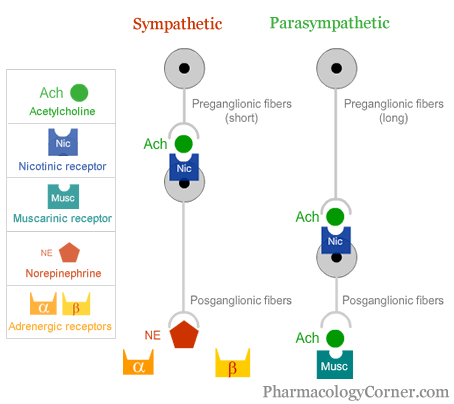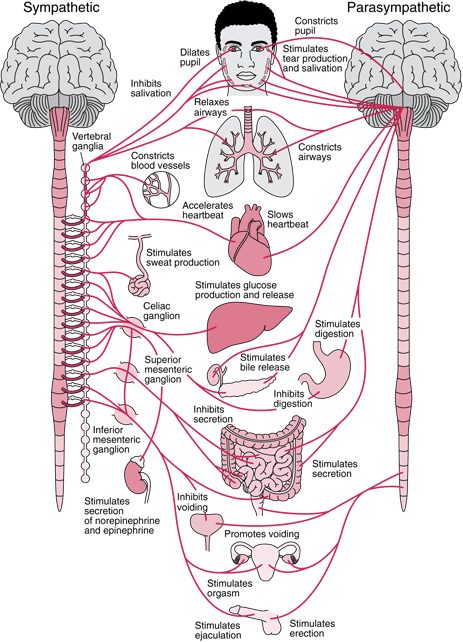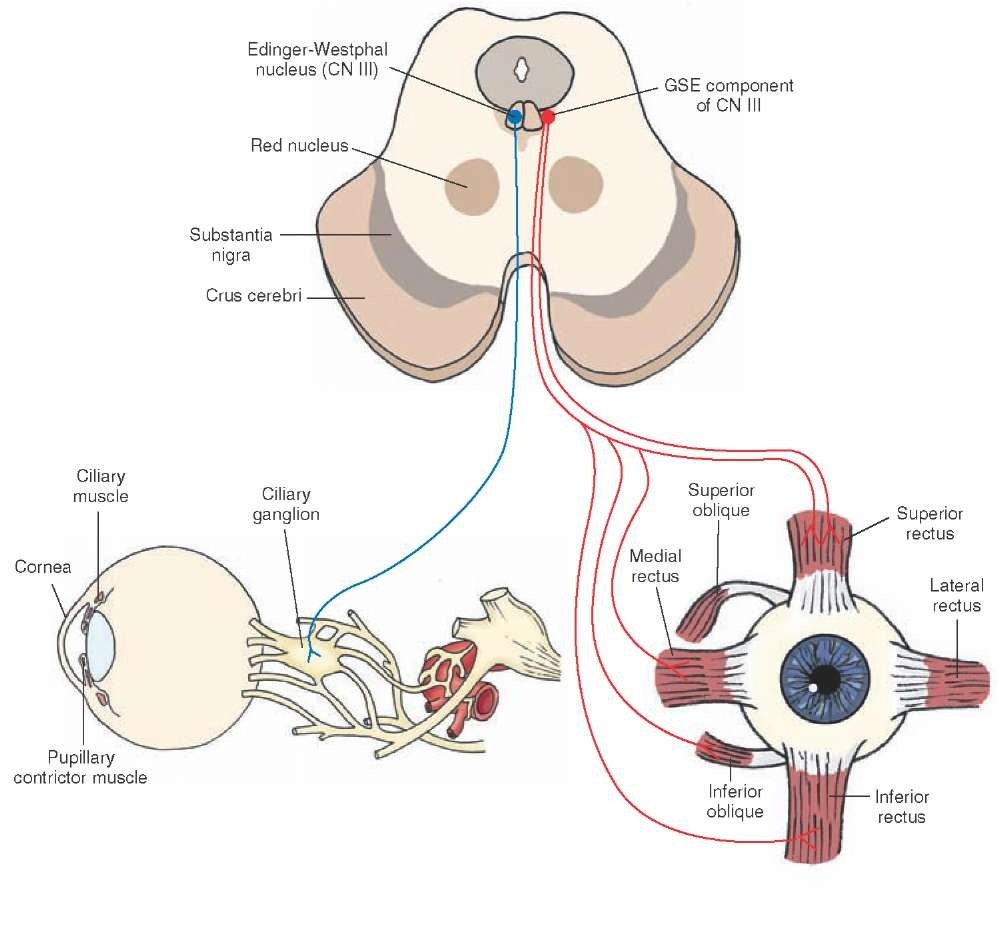Autonomic Nervous System : Structure |
|
Autonomic Ganglia Autonomic ganglia contain post-ganglionic neurones, which send their axons from the ganglia to the structures that they innervate. The activity of post-ganglionic neurones is regulated by pre-ganglionic neurones which have their cell bodies in the CNS. Preganglionic cell bodies of the sympathetic system exist in the lateral horn of the spinal grey matter, whereas the parasympathetic preganglionic neurones exist in certain cranial nerve nuclei, and the lateral horn of some segments of the sacral cord. The cranial nerves that carry parasympathetic fibres include the oculomotor (III), facial (VII), glossopharnygeal (IX) and vagus (X) nerves, innervating the eye, lacrimal and salivary glands and thoracic and abdominal organs.
|
The sympathetic ganglia are located in two chains, one on each side of the vertebral bodies, and sometimes called the paravertebral ganglia. The postganglionic nerves are long and travel to many of their targets within spinal nerves. In contrast, parasympathetic ganglia are located within the target organ. These ganglia receive synapses from long axons of pre-ganglionic neurones, and have short post-ganglionic axons because these ganglia are within the target organ.
|
Generally speaking, internal organs receive a nerve supply from both divisions of the autonomic nervous system, but two important exceptions are the smooth muscle of blood vessels and the ventricles of the heart, which are only innervated by the sympathetic nerves. When both divisions of the autonomic nervous system innervate an internal organ, they commonly have antagonistic, opposing functions.
|
Adrenal Medulla The adrenal medulla consists of modified post-ganglionic sympathetic neurones that secrete their transmitter, mainly adrenaline, into the blood stream.
|



